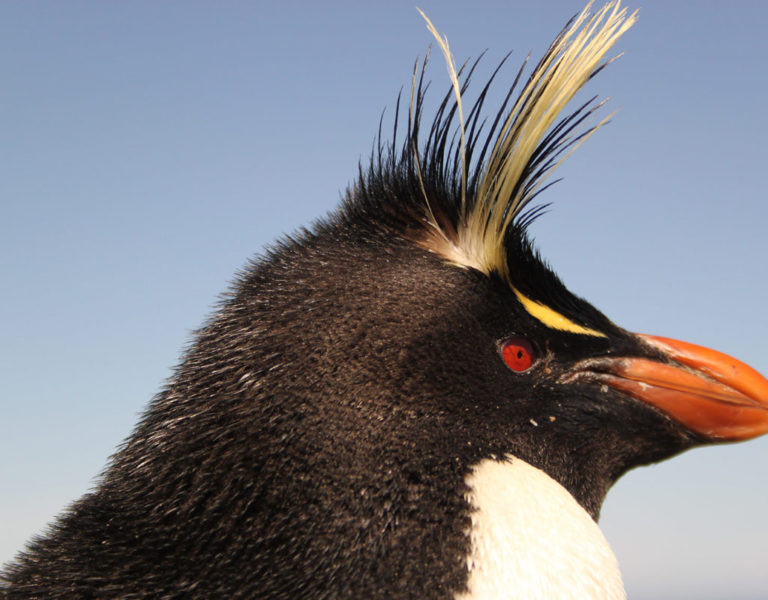
Rockhopper
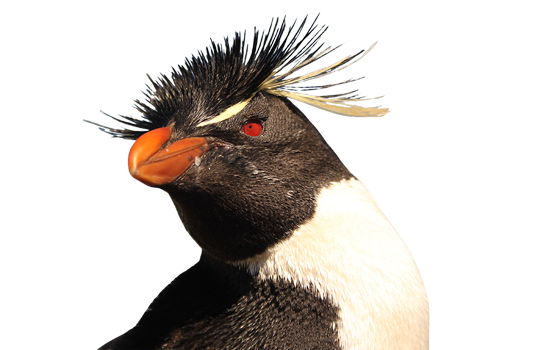
The Southern rockhopper penguin is the smallest Falkland penguin. It is charismatic and popular with tourists and wildlife visitors. Rockhoppers are very agile – named from their habit of hopping up steep cliffs with both feet together. One of two crested penguins found in the Islands (the other is the Macaroni penguin), they can be identified by straight thin yellow eyebrows with yellow plumes above their red eyes.

Vital Statistics
Eudyptes chrysocome
Height: 48 cm, Length: 56 cm
Weight: 3.5 – 4 kg Males weigh heavier than females
Life expectancy: 10-15 years in the wild
Breeding age: 4 years
Migratory: Migrate from the Falklands between April and September
Predators: Sea Lions are the main predators at sea. At the colony skuas and striated caracaras take eggs and small chicks.
Population
The Falkland Islands hold a significant proportion of the world population (320,000 pairs or 36% of the global population in 2010). Historically, the Falkland population has undergone serious declines from the 1930’s. In 1986 numbers crashed due to a mass starvation event and in 2002/03 the population was affected by a harmful algae bloom, which killed many adults. Numbers dropped between 2000 and 2005 by 88,000 pairs which was considered to be a reflection of the harmful algal event. The last Island Wide Census in 2010 indicated that the breeding population between 2005 and 2010 showed signs of recovery, but then followed a second starvation event during the moulting period in 2015. The Falkland population is unlikely to ever recover to the pre-1930 levels, when it was estimated at least 1 million Southern rockhopper penguins populated the Falklands.
Rockhoppers breed at 35 colonies in the Falklands, but 70% of the birds are at three major sites – Steeple Jason, Beauchene Island and Grand Jason.
Breeding cycle
The males arrive at the breeding colonies in early October whilst females arrive a week or so later.
Two eggs are laid in early November, the second egg (B egg) is larger and heavier than the first (A egg).
Both parents take it in turn to perform 2 shifts during incubation which last 32-34 days.
After hatching, males brood the chicks for 24 days, whilst the female provides for the chick with daily forages.
At the Falklands rockhoppers can raise two chicks if conditions allow, however typically they only raise one (from the second B egg).
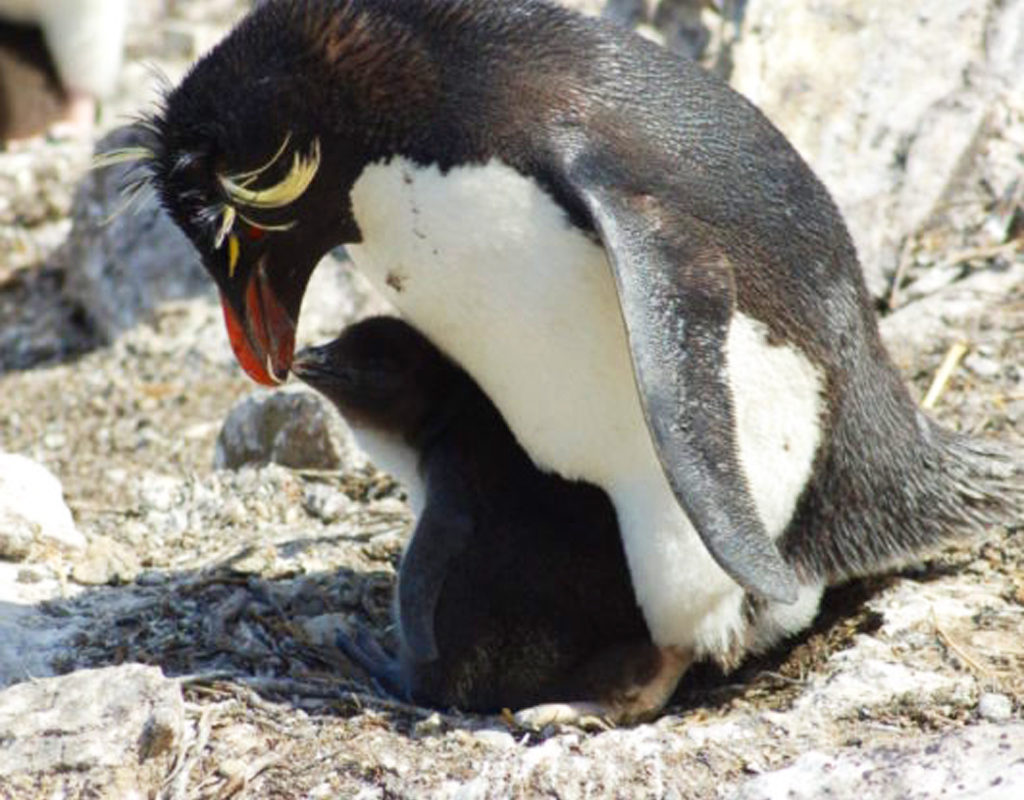
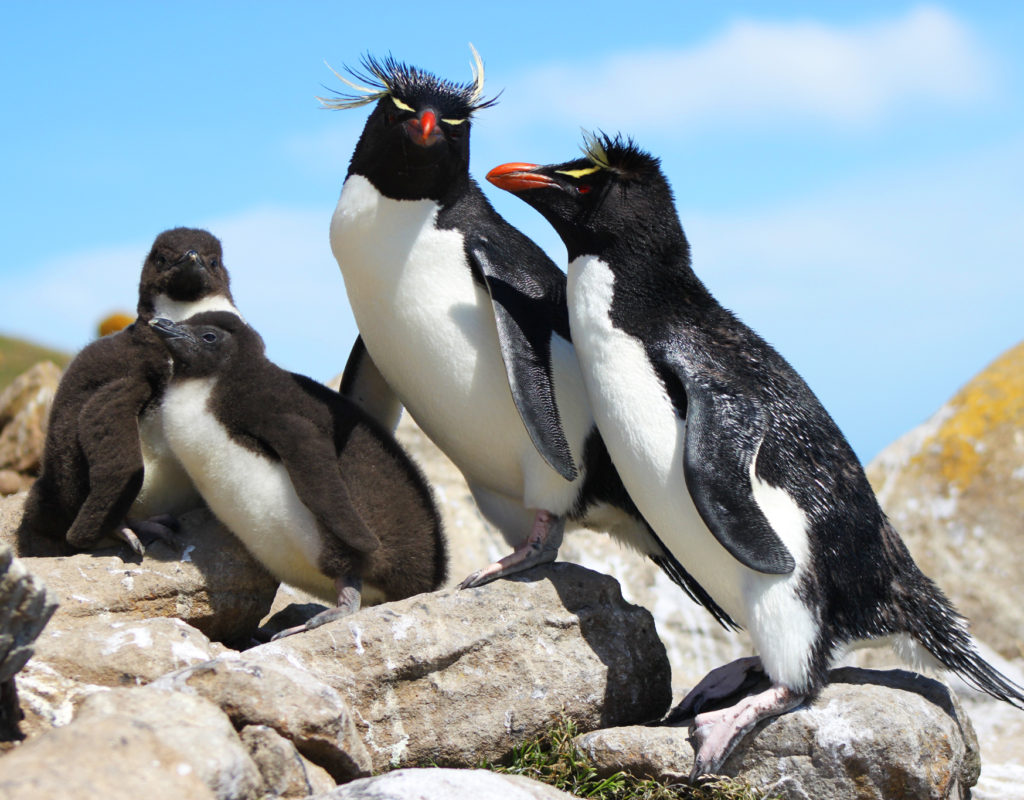
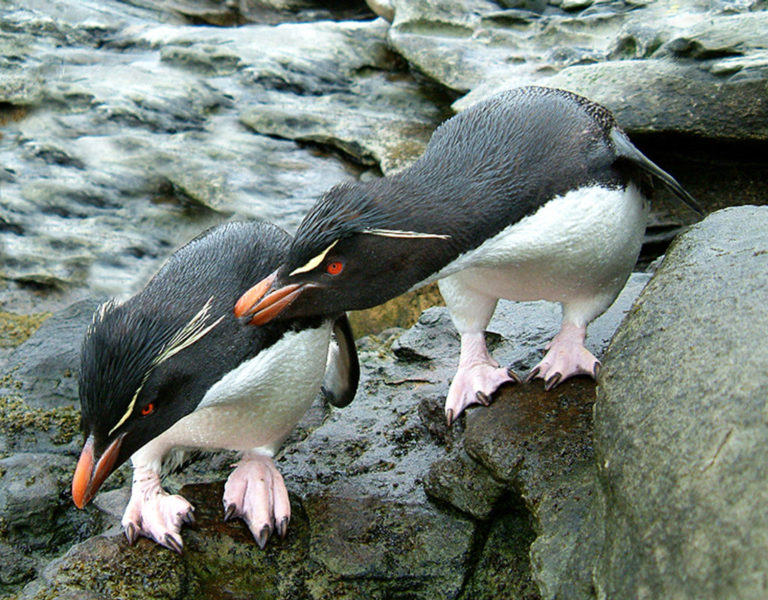
Chicks begin to crèche in January and by February have fledged.
The adults depart on an extended pre-moult foraging trip and often the colonies are deserted during mid-February and early March.
The adults return and moult between mid-March and April when they finally depart.
Going to sea
The diet of southern rockhopper penguin in the Falklands is predominantly crustacean prey with varying proportions of Euphasia lucens, Euphasia vallentini, Thysanoessa gregaria, Thermisto gaudichaudi and Munida gregaria.
Cephalopods and fish are also taken. Rockhopper penguins migrate during the winter and dispersal occurs within a triangle extending from Falkland coastal waters to the Straits of Magellan and Cape Horn and then travelling as far north as 41 degrees south along the Patagonian Shelf.
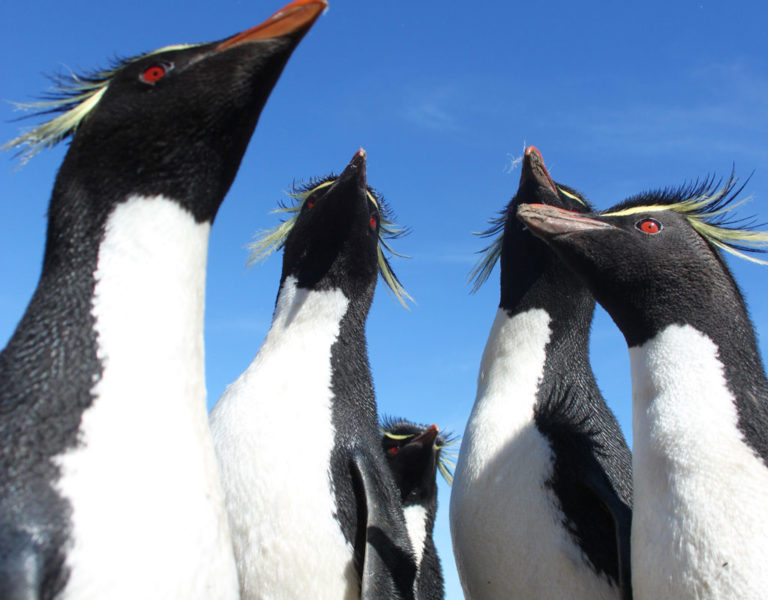
Conservation
Southern rockhopper penguins are listed by the IUCN red list as Vulnerable owing to rapid population declines, which, although they have been on-going for perhaps a century, appear to have worsened in recent years.
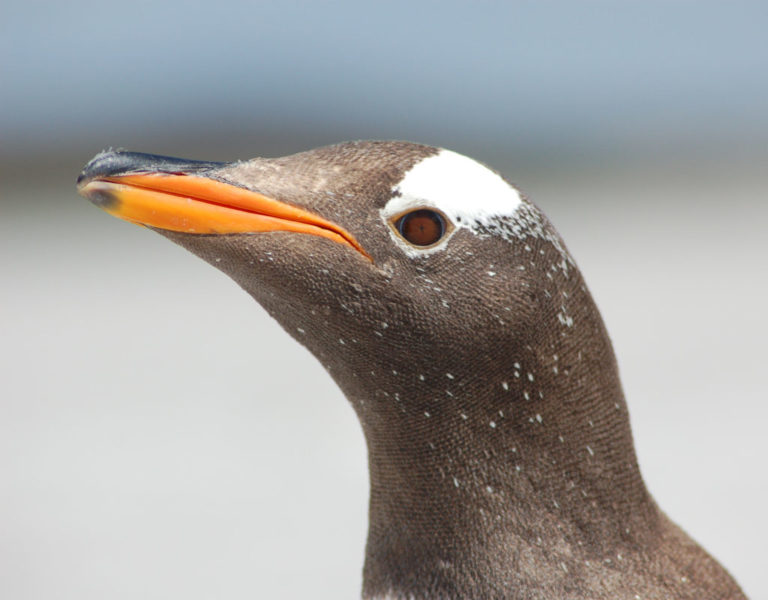
Gentoo
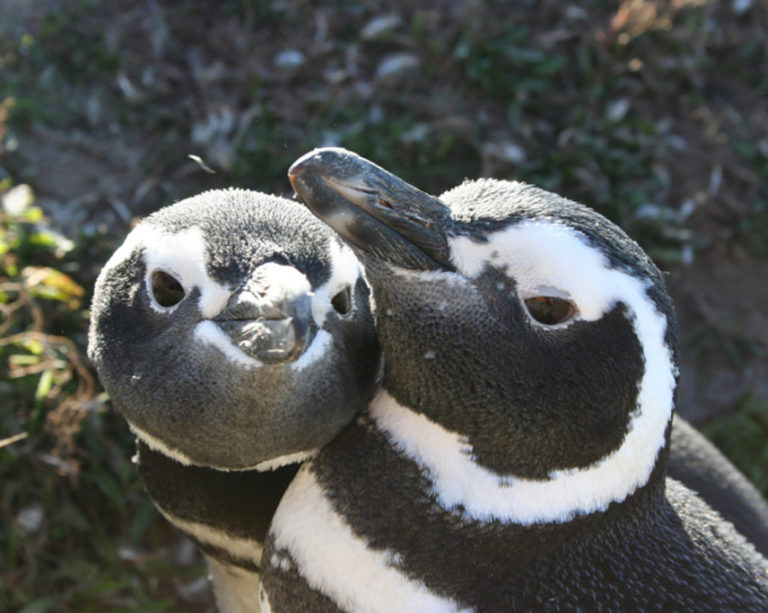
Magellanic

Macaroni
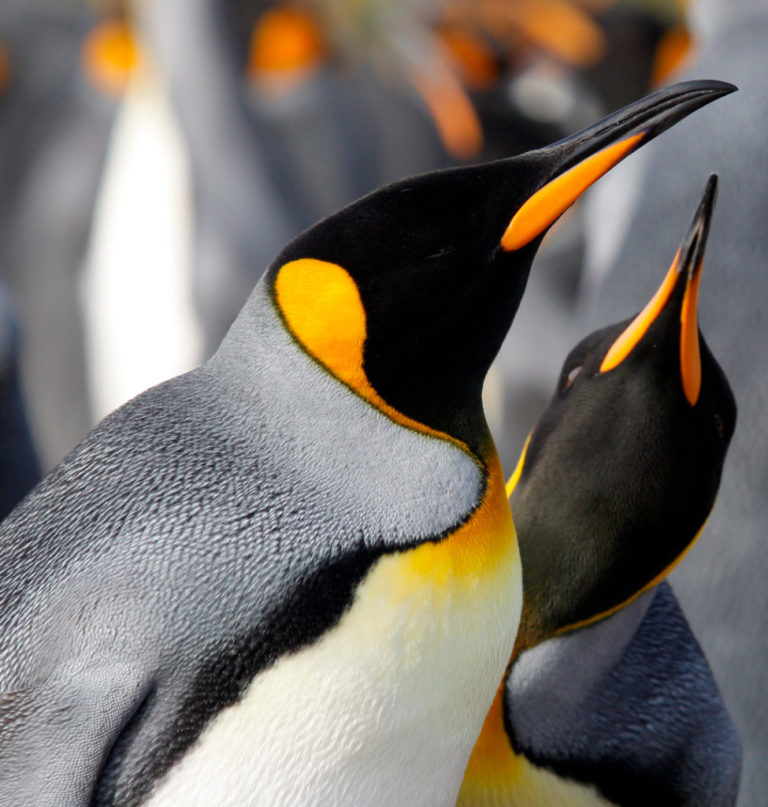
King




